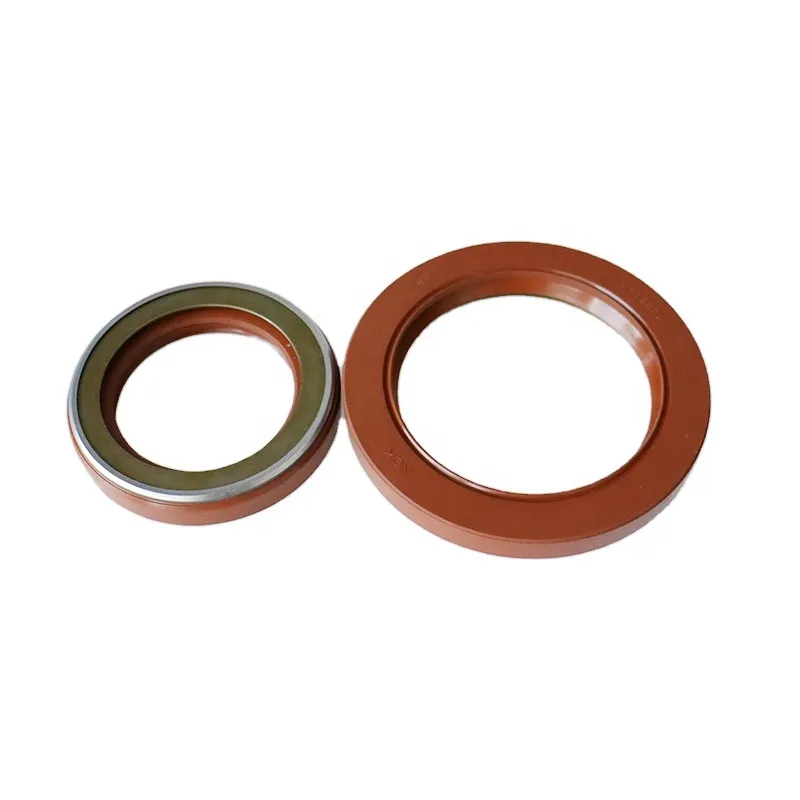Dec . 06, 2024 05:13 Back to list
hydraulic seal repair
Hydraulic Seal Repair A Comprehensive Guide
Hydraulic systems are integral to the functionality of various machines and equipment, from construction machinery to automotive systems. At the heart of these systems lies the hydraulic seal, which plays a crucial role in maintaining pressure and preventing leaks. However, over time, hydraulic seals can wear out due to factors like heat, pressure, and contaminants. When this happens, performing a hydraulic seal repair becomes essential to ensure optimal performance and prevent costly downtime.
Understanding Hydraulic Seals
Hydraulic seals are designed to act as barriers, preventing the hydraulic fluid from leaking out of the system while keeping contaminants from entering. They are typically made from materials like rubber, polyurethane, or PTFE, each selected based on the application's specific requirements such as temperature range, chemical compatibility, and pressure levels. Common types of hydraulic seals include O-rings, rod seals, and piston seals.
Signs of Seal Failure
Recognizing the signs of hydraulic seal failure early can save time and resources. Look for the following indicators
1. Visible Leaks Fluid pooling around hydraulic components is a clear sign that the seals are failing. 2. Decreased Performance If machinery struggles to perform tasks it usually handles effortlessly, worn seals could be the culprit. 3. Increased Maintenance Frequency A sudden uptick in maintenance needs or repairs often points to issues with hydraulic seals. 4. Noise Unusual sounds, such as grinding or hissing, may indicate internal leaks or other seal-related problems.
The Repair Process
If you’ve determined that your hydraulic seals need repair, here’s a step-by-step approach to ensure a successful fix
1. Safety First Always start by shutting down the equipment and releasing any stored pressure in the hydraulic system. This will prevent accidents and injuries during the repair process.
hydraulic seal repair

2. Diagnosing the Problem Before replacing the seals, inspect the entire system for any additional issues such as damaged cylinders or worn components. Identifying the root cause can prevent future failures.
3. Removing the Old Seals Carefully remove the worn seals using appropriate tools, ensuring that you don't scratch or damage the sealing surfaces. Clean the grooves and surrounding areas properly to prepare for the new seals.
4. Selecting New Seals Choose high-quality replacement seals that match the specifications of the original seals. It’s crucial to ensure compatibility with the hydraulic fluid and operating conditions.
5. Installation Install the new seals with care. Use a seal installation tool if necessary to avoid distorting the seals during installation. Ensure that they are seated correctly to prevent any leaks.
6. Testing the System After installation, reassemble the hydraulic system and gradually restore pressure. Monitor the new seals for any signs of leaks and make adjustments as needed.
Preventative Measures
To prolong the life of hydraulic seals, implement regular maintenance practices
- Fluid Maintenance Use the correct hydraulic fluid and maintain it regularly to keep contaminants at bay. - Regular Inspections Routinely check seals for wear and tear, especially in high-use machinery. - Temperature Control Monitor the operating temperature to avoid excessive heat that can degrade seal materials.
Conclusion
Hydraulic seal repair is an essential aspect of maintaining hydraulic systems in various applications. By understanding the signs of seal failure, performing timely repairs, and implementing preventative measures, you can enhance the reliability and efficiency of your hydraulic systems. Take the time to carry out routine maintenance, and when problems arise, address them promptly. By doing so, you can minimize downtime and keep your equipment running smoothly for years to come.
-
TCN Oil Seal Metal Ring Reinforcement for Heavy Machinery
NewsJul.25,2025
-
Rotary Lip Seal Spring-Loaded Design for High-Speed Applications
NewsJul.25,2025
-
Hydraulic Cylinder Seals Polyurethane Material for High-Impact Jobs
NewsJul.25,2025
-
High Pressure Oil Seal Polyurethane Coating Wear Resistance
NewsJul.25,2025
-
Dust Proof Seal Double Lip Design for Construction Equipment
NewsJul.25,2025
-
Hub Seal Polyurethane Wear Resistance in Agricultural Vehicles
NewsJul.25,2025
-
The Trans-formative Journey of Wheel Hub Oil Seals
NewsJun.06,2025
Products categories
















